Labral cuff refixation in the hip: rationale and operative technique for preserving the chondrolabral interface for labral repair: a case series
- PMID: 29423255
- PMCID: PMC5798043
- DOI: 10.1093/jhps/hnx038
Labral cuff refixation in the hip: rationale and operative technique for preserving the chondrolabral interface for labral repair: a case series
Abstract
Arthroscopic labral 'takedown' and refixation is utilized to permit adequate visualization and resection of the acetabular rim deformity, in patients with pincer or mixed femoroacetabular impingement. Deficiencies exist in present techniques, which include disruption of vital anatomical support and vascular structures to the labrum and chondrolabral junction, drill or anchor articular penetration risk, bunching, elevation and instability of the labrum. A new operative technique is described which preserves the important chondrolabral interface, accurately restoring the 'flap seal' of the acetabular labrum while minimizing vascular disruption and reducing the risk of drill and anchor penetration. A prospective series of 123 consecutive cases of pincer or mixed femoroacetabular impingement, treated with arthroscopic labral cuff refixation and preservation of the chondrolabral interface, is reported; operative technique and 2-year outcomes are presented.
Figures

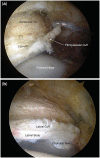
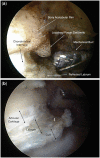

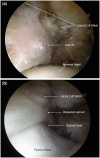

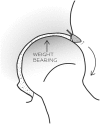

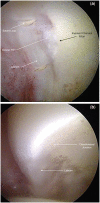
References
-
- Philippon MJ, Briggs KK, Yen Y-M. et al. Outcomes following hip arthroscopy for femoroacetabular impingement with associated chondrolabral dysfunction: minimum two-year follow-up. J Bone Joint Surg [Br] 2009; 91-B: 16–23. - PubMed
-
- Larson CM, Giveans MR.. Arthroscopic debridement versus refixation of the acetabular labrum associated with femoroacetabular impingement. Arthroscopy 2009; 25: 369–76. - PubMed
-
- Beck M, Leunig M, Parvizi J. et al. Anterior femoroacetabular impingement: part II. Midterm results of surgical treatment. Clin Orthop Relat Res 2004; 418: 67–73. - PubMed
-
- Bedi A, Chen N, Robertson W. et al. The management of labral tears and femoroacetabular impingement of the hip in the young, active patient. Arthroscopy 2008; 24: 1135–45. - PubMed
-
- Byrd JWT, Jones KS.. Hip arthroscopy for labral pathology: prospective analysis with 10-year follow-up. Arthroscopy 2009; 25: 365–8. - PubMed
LinkOut - more resources
Full Text Sources
Other Literature Sources

